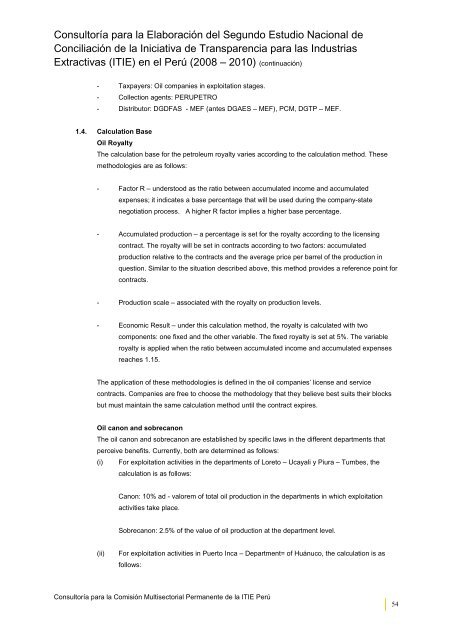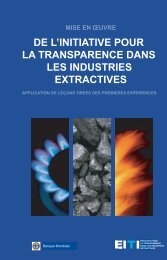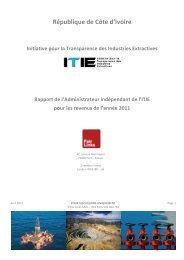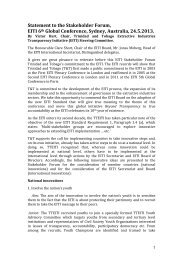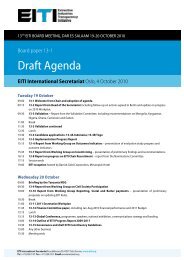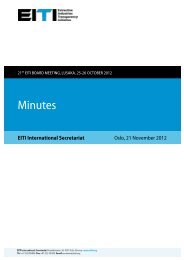Second National Reconcilation Study EITI Peru - unofficial…
Second National Reconcilation Study EITI Peru - unofficial…
Second National Reconcilation Study EITI Peru - unofficial…
You also want an ePaper? Increase the reach of your titles
YUMPU automatically turns print PDFs into web optimized ePapers that Google loves.
Consultoría para la Elaboración del Segundo Estudio Nacional de<br />
Conciliación de la Iniciativa de Transparencia para las Industrias<br />
Extractivas (ITIE) en el Perú (2008 – 2010) (continuación)<br />
- Taxpayers: Oil companies in exploitation stages.<br />
- Collection agents: PERUPETRO<br />
- Distributor: DGDFAS - MEF (antes DGAES – MEF), PCM, DGTP – MEF.<br />
1.4. Calculation Base<br />
Oil Royalty<br />
The calculation base for the petroleum royalty varies according to the calculation method. These<br />
methodologies are as follows:<br />
- Factor R – understood as the ratio between accumulated income and accumulated<br />
expenses; it indicates a base percentage that will be used during the company-state<br />
negotiation process. A higher R factor implies a higher base percentage.<br />
- Accumulated production – a percentage is set for the royalty according to the licensing<br />
contract. The royalty will be set in contracts according to two factors: accumulated<br />
production relative to the contracts and the average price per barrel of the production in<br />
question. Similar to the situation described above, this method provides a reference point for<br />
contracts.<br />
- Production scale – associated with the royalty on production levels.<br />
- Economic Result – under this calculation method, the royalty is calculated with two<br />
components: one fixed and the other variable. The fixed royalty is set at 5%. The variable<br />
royalty is applied when the ratio between accumulated income and accumulated expenses<br />
reaches 1.15.<br />
The application of these methodologies is defined in the oil companies’ license and service<br />
contracts. Companies are free to choose the methodology that they believe best suits their blocks<br />
but must maintain the same calculation method until the contract expires.<br />
Oil canon and sobrecanon<br />
The oil canon and sobrecanon are established by specific laws in the different departments that<br />
perceive benefits. Currently, both are determined as follows:<br />
(i) For exploitation activities in the departments of Loreto – Ucayali y Piura – Tumbes, the<br />
calculation is as follows:<br />
Canon: 10% ad - valorem of total oil production in the departments in which exploitation<br />
activities take place.<br />
Sobrecanon: 2.5% of the value of oil production at the department level.<br />
(ii) For exploitation activities in Puerto Inca – Department= of Huánuco, the calculation is as<br />
follows:<br />
Consultoría para la Comisión Multisectorial Permanente de la ITIE Perú<br />
54


